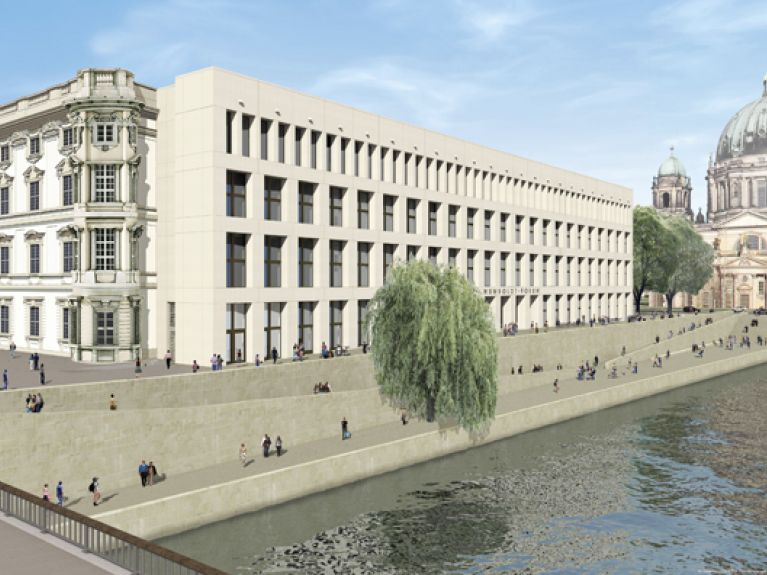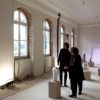Topping-out ceremony for the Berlin Palace – Humboldt Forum
Berlin celebrates the resurrection of history in a spirit of modern cosmopolitanism

You only need to look at the figures to see that something big is happening here: the construction work will cost 590 million euros; 9,000 cubic metres of sandstone will be trimmed (according to old photographs of artisan masons) to shape 3,000 decorative elements for the façade. The republic has been discussing it for 20 years; it’s supposed to open in 2019. Now the building’s shell, complete with dome, is almost completed; the metropolis will celebrate the topping-out ceremony with a concert broadcast live on television on 12 June 2015. What is being built out of ruins at the centre of Berlin is not a baroque German city palace, but the Humboldt Forum, a modern symbol of German history and future designed as an intercultural centre. Although architect Franco Stella had three of the four palace walls reconstructed according to the historical plans, the fourth wall facing the River Spree will remain very simple and offer space for cafés and restaurants, for vibrant life.
A totally new view of history
The pulse of our time will also beat inside the palace. Here, the collections of the Ethnological Museum and the Museum of Asian Art – currently on show in Dahlem – will be presented in a completely new way over an exhibition space of 40,000 square metres. As Hermann Parzinger, President of the Prussian Cultural Heritage Foundation, explains, in the past the ethnological presentation of the masks and boats of the South Seas, the African thrones and Inuit anoraks made of seal intestine basically followed the spirit of colonialism; now the horizon has been extended to include the people in the countries of origin and to cover topical issues like climate change and migration.
The Humboldt Laboratory forges a bridge to university knowledge. Here, the focus is on the role of science in everyday life. A research library – and perhaps an exhibition on the World.City.Berlin – will broaden the perspective to incorporate history and the present, nature, culture and science at the centre of the German capital. Working together with art historian Horst Bredkamp and Hermann Parzinger, Neil MacGregor, currently Director of the British Museum in London, is the founding director of the project. His name will be seen as a guarantee for the top quality of the future presentation. According to Parzinger, the concept of the museum is to be closely interlinked with a programme of events “to make it more tangible for people.” He sees the Humboldt Forum as a great opportunity to offer “a venue for global culture in Berlin”.
The Forum is not named after the brothers Alexander and Wilhelm von Humboldt by accident. In German intellectual history they stand for a combination of natural and cultural sciences, with the naturalist and explorer on the one side, and the German universal scholar on the other. In the future, therefore, visitors to the Humboldt Forum will be moving in a nucleus of world cultural heritage and contemporary history, museum and research. The original city place was destroyed in the Second World War; it was later demolished by the leaders of the GDR and replaced by the Palace of the Republic.
Topping-out ceremony for the Berlin Palace – Humboldt Forum on 12 June 2015

